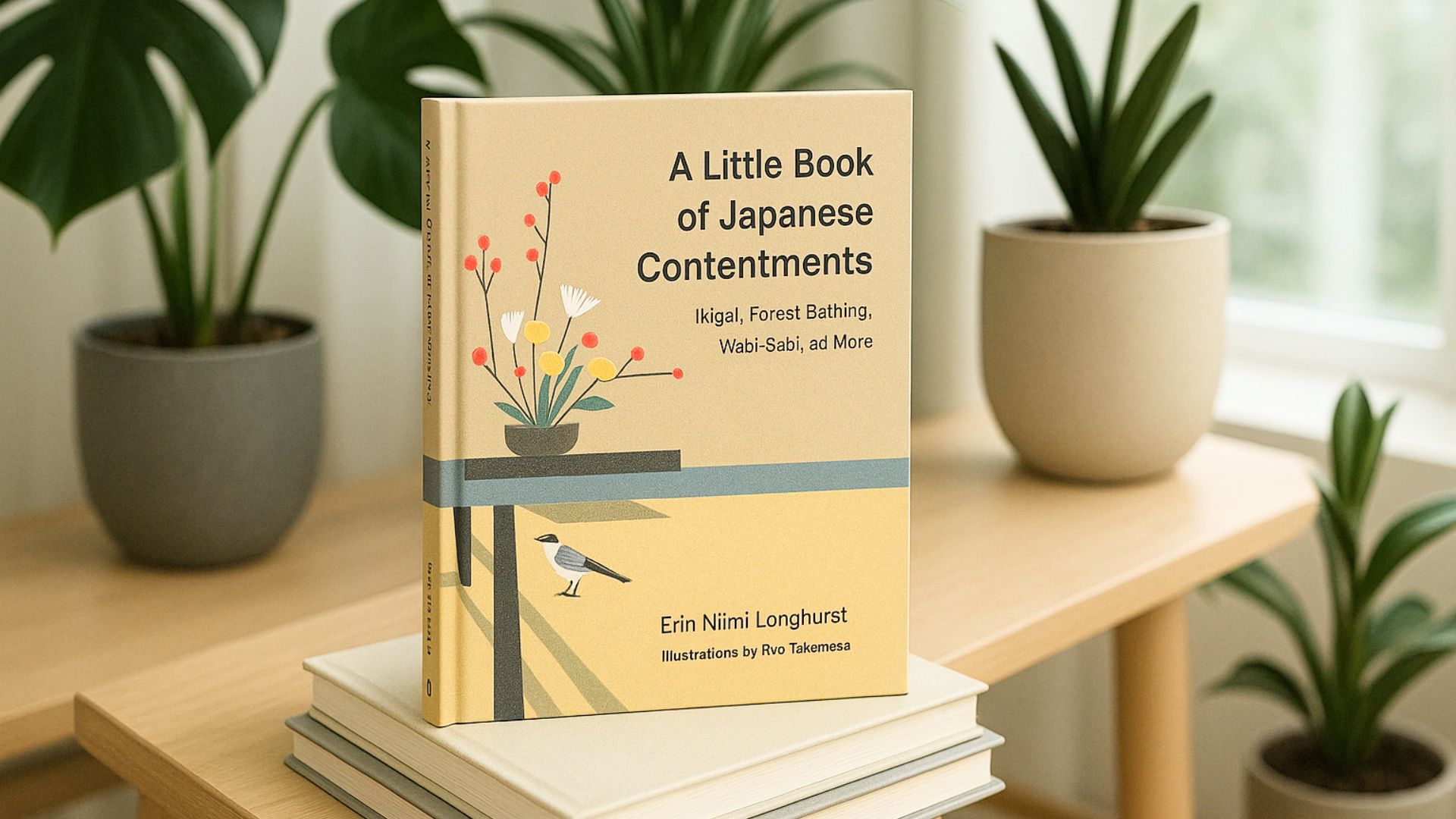Finding Peace in Everyday Life: Erin Niimi Longhurst’s Reflective Guide

Book Review: A Little Book of Japanese Contentments by Erin Niimi Longhurst
A visual and heartfelt journey through Japanese traditions of well-being, purpose, and presence
In A Little Book of Japanese Contentments, Erin Niimi Longhurst offers a warm and reflective exploration of the values and rituals that shape Japanese approaches to a contented life. Drawing on her bicultural background and personal experience, she gently introduces readers to practices such as ikigai (purpose), wabi-sabi (appreciating imperfection), kintsugi (healing), shinrin-yoku (forest bathing), and other traditions rooted in mindfulness, gratitude, and everyday beauty.
This is not a how-to book in the usual sense. Instead, it feels like a conversation over tea, filled with soft memories, cultural reflections, and small, soulful suggestions. With elegant illustrations by Ryo Takemasa, the book invites a slower pace and a more intentional rhythm of living.
What the book promises
The book promises to guide readers through key elements of Japanese philosophy that support a quieter, more connected life. It offers gentle reflections on themes like belonging, healing, appreciation, and self-awareness. Longhurst writes with the intention of showing how these ideas can be experienced through small rituals, shifts in perspective, and daily habits.
Rather than encouraging a complete lifestyle change, she invites readers to draw inspiration from these traditions and find ways to integrate them into their own routines. Her message is one of simplicity and choice.
What the book delivers
Longhurst delivers a beautiful blend of story, memory, and practical insight. The book is divided into three main sections: Kokoro (heart and mind), Karada (body), and Shukanka (habit). Each section includes reflections on specific Japanese practices, grounded in both personal anecdote and cultural tradition.
She brings each concept to life through the lens of her own experiences. Whether describing her grandfather’s quiet gardening habits in Kamakura, her reconnection to cooking as a form of meditation, or her childhood memories of seasonal rituals, Longhurst helps the reader feel both the intimacy and the universality of these ideas.
Rather than offering rigid steps or long explanations, she shares small ideas that can be gently tried. A morning walk without a phone. A pause to enjoy the aroma of tea. A moment of gratitude before a meal. These moments, she reminds us, are enough.
The book includes simple recipes, creative suggestions, and ideas for reflection. But it always returns to the core idea that presence and attention are the most powerful tools we have.
Style and structure
The tone of the book is calm, curious, and poetic. Longhurst writes with sincerity and lightness. Her prose is clean and clear, with a pace that mirrors the content she explores. She never rushes the reader. Instead, she encourages them to pause, notice, and reflect.
The structure is thoughtful and intuitive. Chapters are short and organized around specific values or traditions. The visual design, including soft, minimalist illustrations by Ryo Takemasa, enhances the book’s atmosphere and supports the reflective tone. The layout allows for both a cover-to-cover reading and casual browsing.
This is the kind of book that lives well on a bedside table or coffee tray. It is meant to be returned to often, read slowly, and absorbed in small pieces.
Where the book shines
The book shines in its ability to create a sense of peace without needing to instruct or convince. Longhurst is not trying to sell a lifestyle or promote perfection. She simply shares what has helped her and invites readers to notice what speaks to them.
Her reflections on imperfection are especially moving. When discussing kintsugi, for example, she does not merely describe the tradition of mending broken pottery with gold. She shares how it helped her reframe her own experiences of loss, transition, and personal growth.
There is also a generosity in the way she speaks about heritage. Longhurst acknowledges that she is writing from a bicultural perspective and honours the traditions she draws from with both humility and affection. The book feels like an offering rather than an appropriation.
Light limitations
Readers seeking deep historical or academic context may find the book lighter in detail. Longhurst is not aiming for comprehensive analysis. Her goal is to make cultural wisdom accessible through personal story and lived reflection.
The book does not provide detailed how-to instructions. Instead, it offers gentle invitations. Readers who prefer concrete checklists or structured exercises may wish to pair it with more practical tools or guides.
Because the content flows across a wide emotional and philosophical range, readers may find some sections more resonant than others depending on their current life stage or focus. This variation adds richness but may make the book feel more like a collection than a linear journey.
Final thoughts
A Little Book of Japanese Contentments is a soft and sincere companion for those who long to slow down and reconnect with the quiet richness of everyday life. Erin Niimi Longhurst writes with care and presence, showing that contentment is not found in grand gestures or achievements, but in returning to what matters, one small moment at a time.
This book is not a set of rules. It is a beautifully illustrated reminder that life can be approached with gentleness, ritual, and attention. It meets the reader where they are, offering comfort, reflection, and a path toward deeper appreciation.
Highly recommended for those who enjoy reflective reading, cross-cultural insights, and small shifts that create meaningful change.